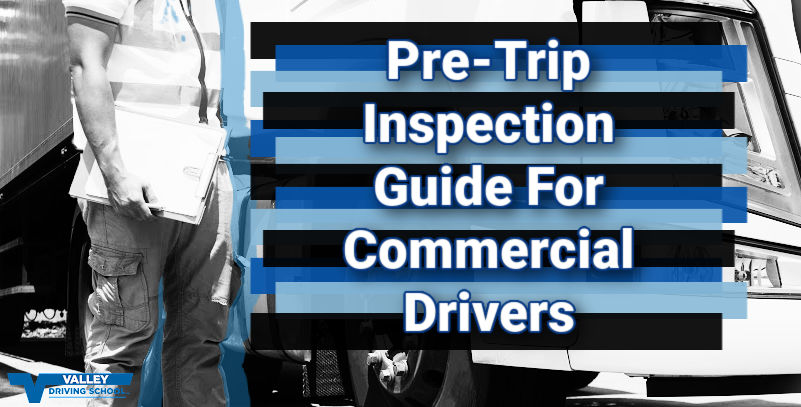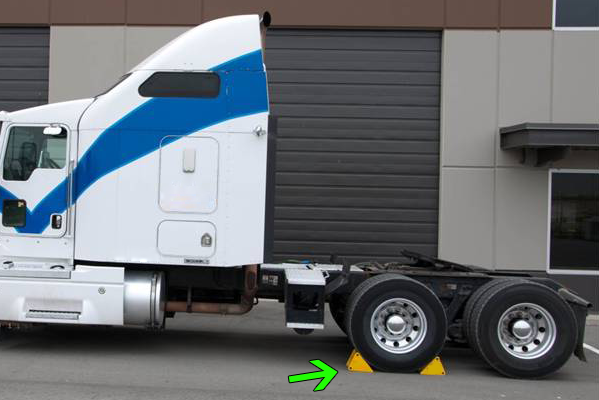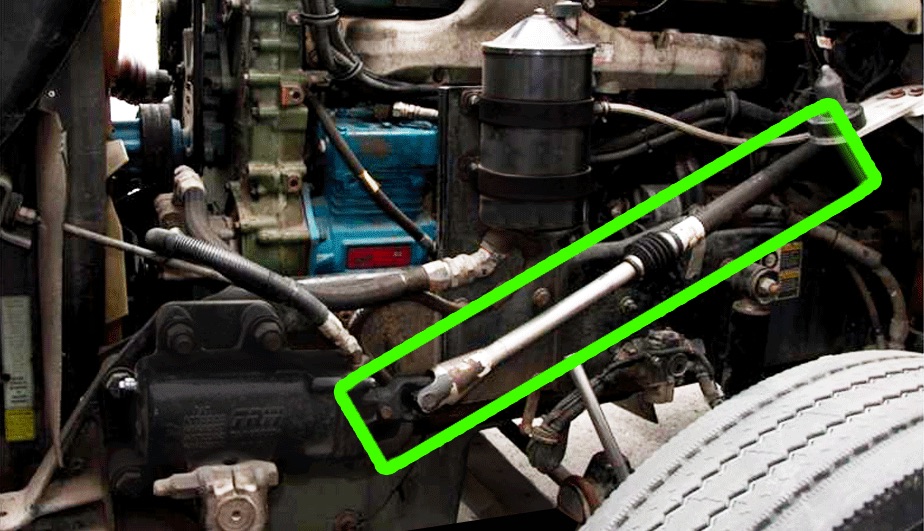A pre-trip inspection is integral to the success of any trip, especially if you’re a truck driver, or someone who transports passengers. Making sure drivers and roadways are safe at all times is a priority for commercial drivers, and a pre-trip inspection will help to insure that your vehicle is going to be safe on the road.

Following a step-by-step guide for a pre-trip inspection is something a professional driver will need to do before every drive, and sometimes en route as well. Drivers will need to know what issues to look for and how they will affect your day!
What is a Pre-Trip Inspection?
A pre-trip inspection involves the driver performing a thorough check of the vehicle before hitting the road and it’s important to make sure your inspection is thorough, and that you’re able to find and address any issues that may come up ahead of time. This will help you avoid any violations that can lead to fines, and catching safety issues can help reduce the amount of time your vehicle spends off the road getting repaired.
 Always choose a safe location to conduct your inspections. Park your vehicle away from traffic and on level ground whenever possible. If you are not in a designated parking area, be sure to employ your warning devices 30 metres (100 feet) ahead and behind your vehicle.
Always choose a safe location to conduct your inspections. Park your vehicle away from traffic and on level ground whenever possible. If you are not in a designated parking area, be sure to employ your warning devices 30 metres (100 feet) ahead and behind your vehicle.
During a pre-trip inspection, you may come across items that are defective on the vehicle, however, not all defects require that the vehicle is parked until they are fixed. Defects will fit into one of two general categories: major defects and minor defects. Depending on which of these categories they fall into will determine the next steps a driver will need to take.
Major & Minor Defects
Many drivers may be unaware of which category a specific defect falls into. After all, it’s impossible to know everything, especially in an ever-changing industry like transportation, but knowing where to find the information when you need it can be quite useful. When it comes to vehicle safety, Canada’s National Safety Code (NSC) sets out minimum standards of vehicle maintenance and inspections for drivers. While the NSC is not itself the governing body of road safety, Canadian provinces and territories have adopted these best practices through each jurisdiction’s various regulations.
When it comes to major defects, if you have uncovered one on your vehicle you are required to record it on your inspection report and notify your employer immediately. The vehicle may not be driven until the defect has been repaired, even if you are already in the middle of your trip. Be sure to follow your company’s policies and procedures whenever engaging support such as towing, recovery and repair services.
If, while driving or inspecting your vehicle, you discover a minor defect, you would be required to report it to your employer prior to the next inspection. You may continue to drive as long as the defect doesn’t affect the safe operation of the vehicle. The defect must still be recorded on your inspection report and it must be noted that it doesn’t require immediate repair.
Common Defects
The following are some of the more common defects a driver may encounter while performing their pre-trip, en-route or post-trip inspections.
Air Brake Systems:
-
Minor Defects
- Audible air leak
- Slow air pressure build-up rate
-
Major defects
- Air loss rate exceeds prescribed limit
- Low air warning system fails to activate or is activated
- Inoperative service, parking, or emergency brake
- Inoperative tractor protection valve
- Pushrod stroke of any brake exceeds the adjustment limit
Hydraulic Brake Systems:
-
Minor defects
- Brake fluid is below indicated minimum level
-
Major defects
- Brake fluid leak
- Activated warning device (other than ABS)
- Brake fluid reservoir is less than ¼ full
- Brake pedal fade or insufficient brake pedal reserve
- Parking brake, brake boost, or power assist is inoperative
Suspension Systems:
-
Minor defects
- Suspension fastener is loose, missing or broken
- Air leak in air suspension
-
Major defect
- Loose U-bolt
- Damaged or deflated air bag
- Cracked or broken main spring leaf
- More than one broken spring leaf in any spring assembly
- Part of spring leaf or suspension missing, shifted or contacting another part of the vehicle
Tires:
-
Minor defects
- Damaged tread or sidewall
- Slow air leak
-
Major defects
- Flat tire
- Tread depth is less than wear limit
- Marked as “not for highway use”
- Exposed cords in tread or outer sidewall
- Tire contacting another tire or other vehicle component (other than the mudflap)

Wheels, Hubs and Fasteners:
-
Minor defects
- Leaking wheel seal
- Hub oil below minimum level
-
Major defects
- Wheel has loose, missing or ineffective fastener
- Evidence of imminent wheel, hub or bearing failure
- Damaged, cracked or broken wheel, rim or attaching part
Steering:
-
Minor defects
- Steering wheel lash is greater than normal
-
Major defects
- Steering wheel lash exceeds required limit
- Steering wheel is insecure or does not respond normally

Lamps and Reflectors:
-
Minor defects
- Required lamp does not function as intended
- Required reflector is missing or partially missing
-
Major defects
- Failure of a rear-mist indicator lamp - at all times
- Failure of both rear-most brake lamps - at all times
- Failure of both low-beam headlamps - when required
- Failure of both rear-most tail lamps - when required
Windshield Wipers / Washer Fluid:
-
Minor defects
- Wiper blade damaged, missing or fails to adequately clear the driver’s field of vision
- Control or system malfunction
-
Major defects
- Wiper or washer fluid fails to adequately clear the driver’s field of vision in area swept by the driver’s side wiper
For a more exhaustive list of defects and the categories they fall into, please check out the NSC Standard 13, Daily Vehicle Trip Inspections document.
–
Whether you’re new to the world of commercial driving or a seasoned driver, knowing what to look for while conducting a commercial vehicle inspection will save you time, money, and frustration later on down the road!
